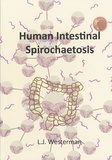Human Intestinal Spirochaetosis

Westerman, Laurens
- Promoter:
- Prof.dr. J.A. (Jaap) Wagenaar
- Co-promoter:
- Dr. J.G. (Hans) Kusters
- Research group:
- Wagenaar
- Date:
- December 10, 2013
- Time:
- 10:30 h
Summary
Human intestinal spirochaetosis is a condition of the colon that is characterized by the presence of spirochaetes attached to the mucosal cells of the colon. These spirochaetes belong to the family Brachyspiraceae and two species are known to occur in humans: Brachyspira aalborgi and Brachyspira pilosicoli. However, the clinical relevance of intestinal spirochaetosis in humans has remained unclear, despite the condition being known since the 1960s. This is presumably due to the fact that these bacteria are very difficult to culture and that histopathological evaluation does not allow for species differentiation. Despite this obscurity, there is some evidence suggesting pathogenic potential of Brachyspira pilosicoli, but this has never been thoroughly investigated. However, in animal husbandry, infections with Brachyspira species are feared since they cause large economic losses in both the pig and poultry industry. While it is known that the veterinary pathogen Brachyspira pilosicoli also colonizes humans, there was no convincing data on its pathogenic potential in humans. This thesis describes the development of a set of diagnostic tools that allow for easy and fast species differentiation between the two human Brachyspira species. Moreover, it provides evidence for a pathogenic potential of Brachyspira pilosicoli for humans. Since almost one in five Dutch human intestinal spirochaetosis cases is caused by Brachyspira pilosicoli, it is important to differentiate between the non-pathogenic Brachyspira aalborgi and the pathogenic Brachyspira pilosicoli. Additionally this thesis provides evidence for a zoonotic potential of Brachyspira pilosicoli by developing a culture-independent approach for molecular characterization of uncultivable bacteria.